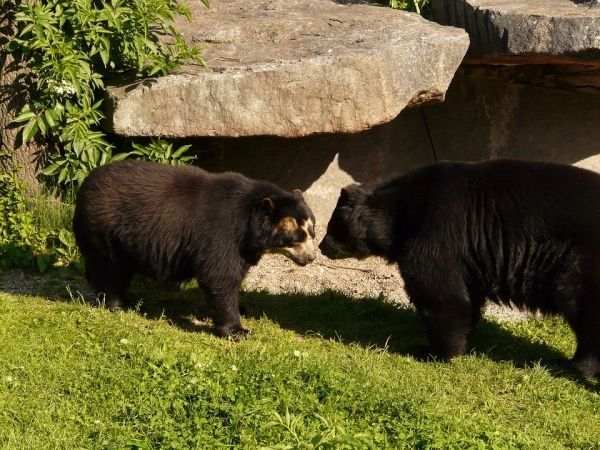A new study is shedding light on the importance of one critical resource for Andean bears living in the dry mountain forests of Peru: water. The study—a collaboration between the Norwegian University of Life Sciences and San Diego Zoo Global, with assistance from the Spectacled Bear Conservation Society–Peru—found that Andean bears focus much of their tree-rubbing behavior on shrubs and trees that are located on trails near water holes. Bears typically bite, claw and rub their body parts on trees, which is believed to be an important form of communication with other bears in the region. The discovery that this behavior occurs near water holes could have implications for future conservation programs.
“It may seem obvious that water holes would be an important resource for Andean bears living in tropical dry forests—however, these results suggest that water holes are significant not just as sources of drinking water, but also as important sites where bears communicate with one another,” said Russ Van Horn, Ph.D., San Diego Zoo Global scientist. “Because water holes are often the focus of activity by humans and their livestock, conservation planners will need to balance the interests of people and Andean bears in future programs.”
A paper detailing results of the study, recently published in the journal Ursus, reported that while Andean bears didn’t show a particular preference for tree-rubbing species, the locations of rubbed trees and shrubs were concentrated on trails near water holes. In the tropical dry forests of Peru, water is a relatively rare, albeit critical resource. Consequently, since livestock in the area also make use of water resources, conflicts may result between humans and bears.
Read more at San Diego Zoo Global
Photo credit: Hans via Pixabay


